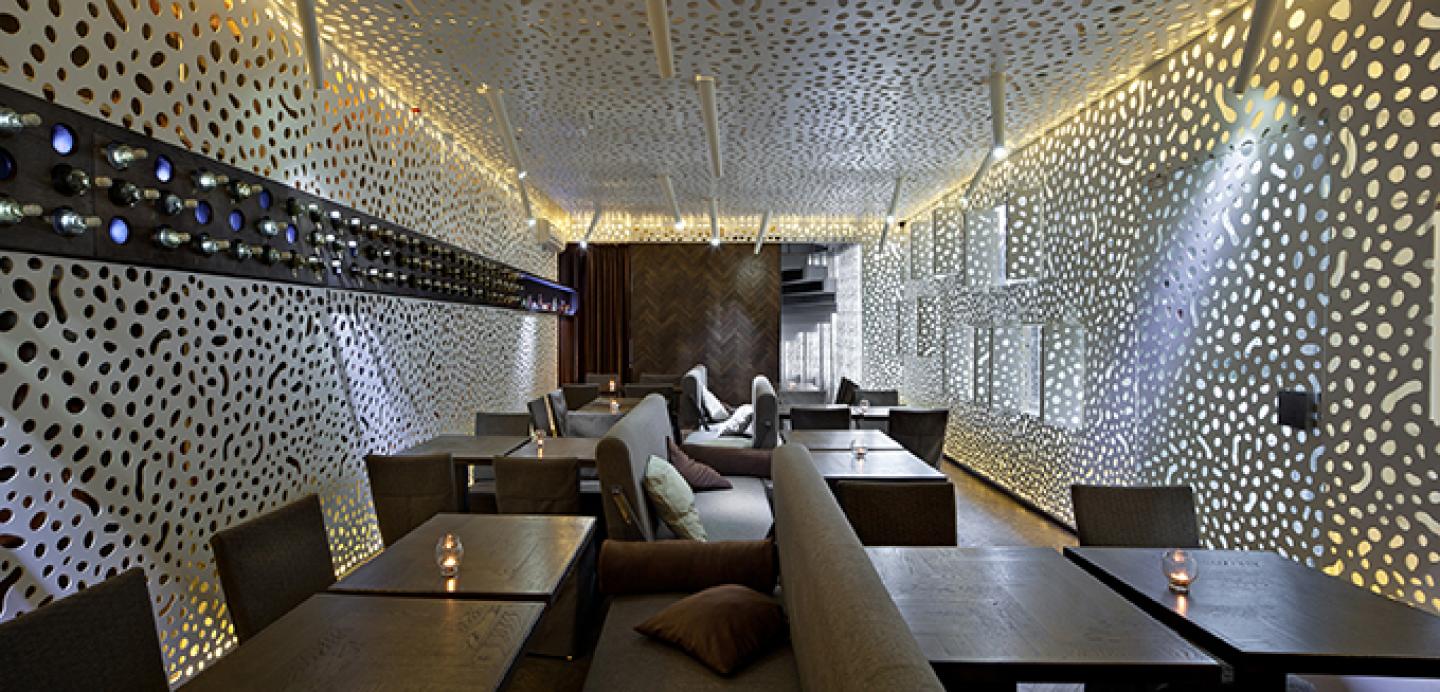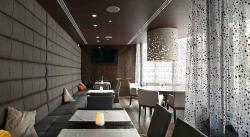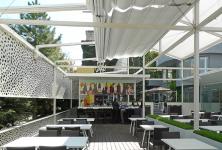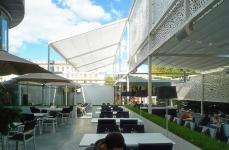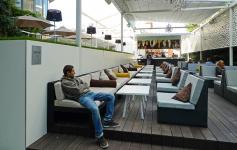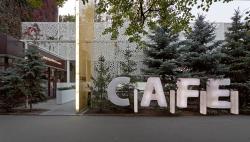The plot is a relatively empty space located in the middle of the dense urban development. A small cafe was build on this place in the early 90-s. However, as time went by, there appeared a need for its renovation.
Historically, this place has always represented a gap in the urban tissue, which makes it even more valuable. Our aim was to retain this presence of emptiness, but at the same time provide it with a new content, preserving the existing building and trees. To this end we made use of the typology of “urban rooms” or “inner courtyards” to create a variety of miscellaneous, though interconnected spaces. The whole space is divided into three major “rooms”: the main room with a wooden terrace and a bar, with movable canopies above; a middle room with a summer kitchen and a fixed canopy, and a small “room” on the upper open-air terrace, which adjoins the cafe itself.
2012
2012
Light-weight perforated structures create cozy “urban rooms” without losing visual connection with the surrounding space. This duality is even more emphasized by a window in the perforated screen. A light modular frame invites a variety of scenarios that can take place within this space: such as fashion parades or a summer cinema. Besides, it identifies the space within the scale of the surrounding development by means of creating a unifying shell of a ghost-house.
The indoor part of the complex preserves the atmosphere of the summer pavilion with a slight hint of intimacy. A clever play of light and shadows creates a feeling of sun rays piercing through the foliage. The perforated shell seems to be “hanging” in the air, revealing the scenery behind. The rest of the lighting is of theatrical nature, highlighting only the most important objects, sparing the intimacy of individual places. The furniture and lighting can be easily rearranged, allowing for fast transformations of the interior depending on the situation.
Drozdov&Partners: Aleksandr Abrosimov, Sergey Vlasov, Denis Davydov, Oleg Drozdov, Sergey Rusanov
